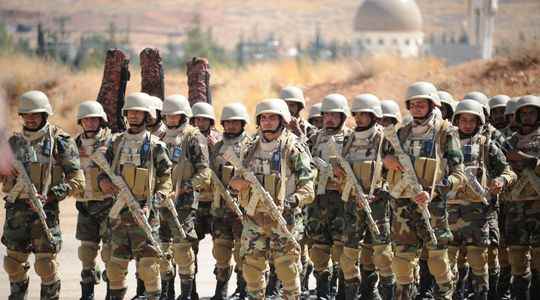Mirroring the thousands of Ukrainian civilian and military losses, many Russian soldiers die every day on the front lines, weapons in hand and the letter Z inscribed on their chests. Russian authorities reported on Friday the death of 1,351 of its fighters. Very far from the figure unveiled by NATO representatives, a few days earlier, who estimated that at least 15,000 soldiers had been killed in the ranks of Vladimir Putin’s army. The way in which the Kremlin is reluctant to document the losses it suffers illustrates the extent of the thinning of its troops. A haemorrhage that gave birth to a considerable phenomenon: the death of many generals and senior officers.
On Friday, Ukraine claimed to have shot dead the general and commander of the 49th army of the southern district of Russia, Yakov Rezantsev, or, according to it, the seventh officer of this rank killed since the beginning of the war. The Ukrainian military strategic command is convinced of one thing: its army is the cause of excess mortality among adversary officers. If the figure is confirmed, it reveals that in just four weeks of combat, the attrition rate observed is already higher than that recorded during the worst months of combat during Russia’s bloody nine-year war in Chechnya, or during the Russian campaigns in Georgia and Syria, reports the washington post.
Deliberate target of the Ukrainian army
Targeting the generals is one of the priorities of kyiv’s military strategy. It has been openly embraced and publicly justified by Ukrainian officials who are concentrating their forces on slowing down his adversary’s advance by disrupting his line of command. Thus, the Ukrainian army multiplies the strikes on the units of generals. They are recognizable thanks to the vehicles and the antennas that protect them. The Ukrainians then target these positions with anti-tank missiles or through an attack drone. The death of Andrei Paliy, deputy commander of the Black Sea Fleet, in fighting in Mariupol, confirmed last week by the governor of Crimea (annexed by the Russians), Mikhail Razvozhayev, tends to confirm the success of the tactic employed by Volodymyr Zelensky.
The other element which facilitates the recognition of the elite elements of the Russian army on Ukrainian soil is the absence of precautions taken in the protection of communications. Carelessness caused several officers to use unencrypted devices. Since the Ukrainians effortlessly intercept Russian orders and commands, it is much easier for them to locate adversary masterminds and anticipate their future movements. If Russia has announced that it wants to concentrate its efforts on “the liberation of Donbass”, it is also because it must face up to Ukraine’s ability to disrupt the war machine that Vladimir Putin had set in motion on February 24.
Russian disorganization
From the first days of the war, the Russian army suffered from immediate disorganization. She was quickly affected by shortcomings in her communication. The quality of its intelligence, its logistics or the relevance of its tactical choices were instantly disrupted. Mistakes which “force the leaders to go very far forward on the lines of contact”, noted a senior French military official to AFP. A risky advance that exposes the most strategic elements of a battalion, which also explains the preponderance of high ranking officers among the Russian victims of the fighting. By going ahead, they risk creating drags in the chain of command in the event of injury or death.
But casualties are not a variable that enters Vladimir Putin’s equation when scaling up his war operation. The Russian president knows, however, that sacrificing generals is as much a human blow as a strategic one. Leaders of this level are not found at the snap of a finger. Magomed Tushayev, Andrei Sukhovetsky, Vitaly Gerasimov, Andrey Kolesnikov, Oleg Mityaev, Yakov Rezanstev and Andrei Mordvichev… According to the Ukrainian authorities, all of them are generals who died in battle. More than arousing fond memories, their deaths could influence Moscow’s plan.
